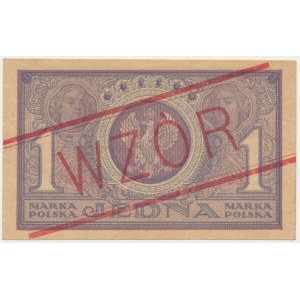Rare pattern with consecutive numbering. Printed pattern in large font.
No deflection through the field. Fading deflection on upper right corner, freshness of others.
No conservation. Rustling paper, printing with natural luster.
A beautiful, pleasant looking piece.
In August 1915, the General-Government of Warsaw was established in the part of the Russian Empire occupied by the German army. On November 5, 1916, the Governor-Generals of both occupation zones issued the Act of November 5. Under a decree of December 9, 1916, the German occupation authorities established an issuing institution - the Polish National Loan Fund, which opened on April 26, 1917.
The PKKP was the issuer of the Polish mark divided into one hundred fenigs, whose rate was equalized with the German mark. Iron phenig coins and paper Polish marks were introduced into circulation. The Polish Republic, reborn in 1918, initially did not even have a substitute for its own treasury, so the Polish mark was recognized as a currency.
The reborn Polish state took over and polonized the PKKP. The stock of Polish marks printed in Berlin, inherited from the General Government of Warsaw, was fully allowed into circulation.
The February-May issue consists of five denominations designed by Adam Poltawski. The banknotes designed by him are part of the European trend of banknote composition of the time, where the dominant representation was a portrait. In the case of this issue, it is a portrait of a historical figure.
In the case of the lower denominations, the obverse carries informational content about the banknote. On the other hand, the reverse featured propaganda content depicted in the form of portraits.










